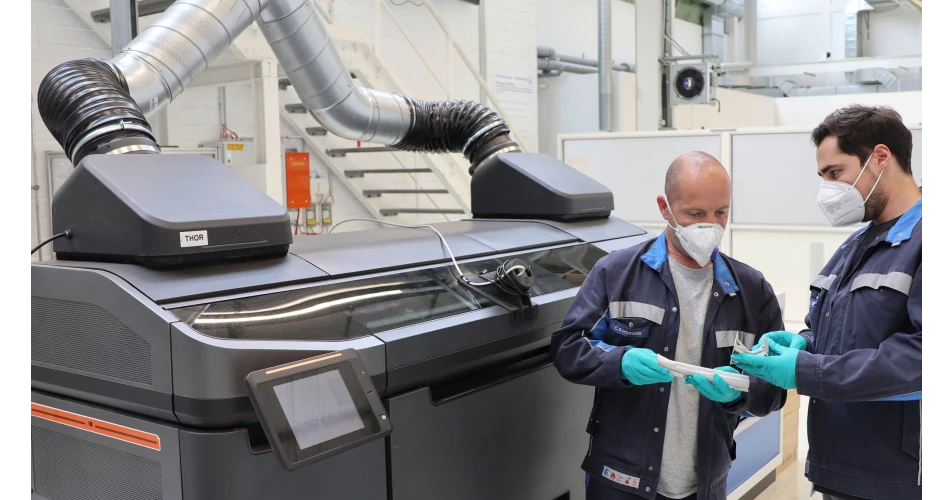Volkswagen is now working with Siemens and HP to industrialise 3D printing of structural parts, which it says can be significantly lighter than equivalent steel components. The new process, known as binder jetting, is being used to manufacture components at the company’s main plant in Wolfsburg.
Whereas conventional 3D printing uses a laser to build a component layer by layer from metallic powder, the binder jetting process uses an adhesive. The resulting metallic component is then heated and shaped. Using the binder jetting component reduces costs and increases productivity. The components weigh only half as much as those made from sheet steel. Volkswagen says it is currently the only car maker using this 3D printing technology in the production process.
Christian Vollmer, member of the Board of Management of the Volkswagen Brand responsible for Production and Logistics said, “Despite the ongoing challenges of the Coronavirus pandemic, we’re continuing to work on innovation. Together with our partners, we aim to make 3D printing even more efficient in the years ahead and suitable for production-line use.”
Cedrik Neike, member of the Managing Board of Siemens AG and CEO Digital Industries commented, “We are very proud to support Volkswagen with our innovative 3D printing solutions. Our automation and software solutions are leading in industrial production applications. Using this technology, Volkswagen will be able to develop and produce components faster, more flexibly and using fewer resources.”
With the first full-scale use of binder jetting, VW intends to acquire important experience and learn which components can be produced economically and quickly in the future or how additive manufacturing can support the digital transformation of production at Volkswagen.
By 2025, the aim is to produce up to 100,000 components by 3D printing in Wolfsburg each year. The first components made using the binder jetting process have gone to Osnabrück for certification: components for the A pillar of the T-Roc convertible.
Volkswagen has been using 3D printing for 25 years, starting in Technical Development with the goal of accelerating vehicle development and reducing costs. Today, there are 13 units at the Wolfsburg plant using various printing processes to manufacture both plastic and metal components. Typical examples are plastic components for prototypes such as centre consoles, door cladding, instrument panels and bumpers. Printed metal components include intake manifolds, radiators, brackets and support elements.
